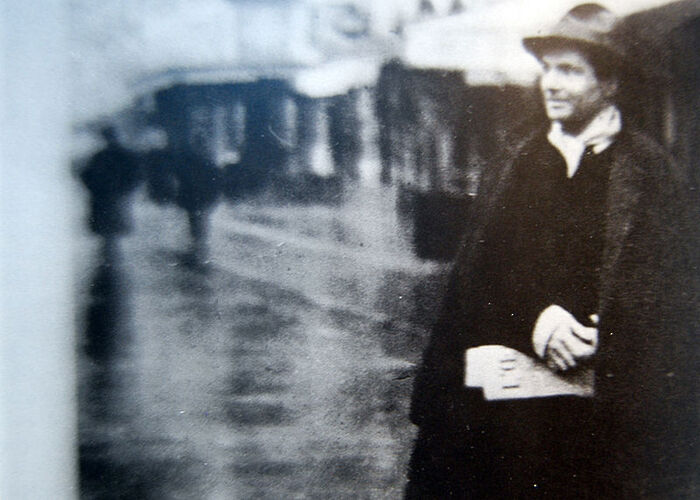Art is the unexpected
Lydia Bunt tackles the questions of whether skill is an inherent part of good art and challenges us to rethink our relationship with modern art

Sometimes I struggle a little with modern art. It’s less of that which we know, and more of a certain spatial emptiness that doesn’t offer up many handholds and footholds for understanding. The world has lived a fair few centuries of art that is busy, technical. A blank canvas shoved on a wall is certainly less skilled than the ceiling of the Sistine chapel, but does it have less aesthetic value because of it?
One OED definition suggests that ‘aesthetic’ is “of or relating to perception by the senses,” and another “of or relating to the perception, appreciation or criticism of that which is beautiful.” In the word itself, we somehow merge the notions that good art makes you feel, and that good art is beautiful. But, ‘aesthetic’ confines the way we think about art. Beauty isn’t the only thing that makes us feel, and just because we enjoy looking at something doesn’t make it good art. By definition, the aesthetic can be the unexpected.
“If ‘good’ art simply becomes reality, then skill is invalidated, because it doesn’t create anything beyond the known”
A confused fourteen-year-old me didn’t really take any definitive action when told in art class that her drawing was too outlined. Nobody ever explained explicitly that the point of art (at least, at this level) was to replicate something as realistically as possible, but when I think about it now, that was the implication. How, though, can you teach a point to art? You just can’t – it’s counterproductive, and this is where ‘skill’, and the notion of skilled art being good art, trips up.
Art is dissonant. It’s different, explosive; it lights the trailing fuse of a new thought, grabs our brains and lifts them clear out of our heads onto new pathways of comprehension. Skill, impressive as it is, is also predictable, defined and, by its very nature, has been done before. In a tourist art shop are paintings that have taken hours upon hours to paint, but which lack originality and for this are worth little next to a nice controversial Dada urinal, lifted straight from a public toilet.
In good art, the real is taken and shaken up, especially in this century where shocking content fails to impress us as easily. Jeff Koons is known for his replication of banal objects, and when I look at his art, I can’t work out straight away how it’s making me feel. In fifty, or a hundred years time, those emotions will be more easily accessible. The fact that they aren’t right now means Koon’s art is innovative. Controversial art eventually normalises (think Van Gogh, Picasso, Pollock), and it’s the job of the contemporary artist to make sure that the dust doesn’t settle for too long.
“You have to learn the rules before you can know how to break them”
It’s an important point that most artists can do ‘skill’ – they’ve been trained at art school, after all – but that this isn’t what defines them as creators. You have to learn the rules before you can know how to break them. In the same way, you can’t advance the artistic cannon, create off-the-wall art, without knowing what came before – and that, for the most part, is art that is considered typically ‘skilled’. Skill is important mainly as a prerequisite to larger creative explosions.
Hyperrealism is an interesting foray into the question of just how far into, even beyond, the real that art can stretch. It’s super-skilled – in terms of painting technique, way more skilled than, say, one of Picasso’s paintings. But, from reality, there’s only so much further into the real you can go. If ‘good’ art simply becomes reality, then skill is invalidated, because it doesn’t create anything beyond the known. Hyperrealism pushes a little at the boundaries between the real and the representative, but after it, there’s nowhere for skill to move, which is why art has to change.
If you look at Tracey Emin’s bed and think ‘I could have done that’, the point is: you didn’t. If we feel something different when we look, our notion of art is being challenged. Any definition of ‘skill’ that we live by is only another’s opinion on art that we assume infallible. There’s a reason that art movements are named as such – they move, and good art bubbles and spits with a turbulence that skill alone cannot hope to capture.
Skill was impressive, once – and once, it was a prerequisite of good art. Now, we’re on a backlash – skill no longer matters for the precise reason that it used to matter, a lot. You, or I, might not like modern art. That’s irrelevant – it’s not productive to feel too comfortable in a piece of art. The important thing is it makes us feel something, even if it’s emptiness. When the deliberately unskilled is set before us as new art, our perception changes – and that’s inevitably for the better
 Comment / Cambridge students are too opinionated 21 April 2025
Comment / Cambridge students are too opinionated 21 April 2025 News / Candidates clash over Chancellorship25 April 2025
News / Candidates clash over Chancellorship25 April 2025 News / Cambridge professor paid over $1 million for FBI intel since 199125 April 2025
News / Cambridge professor paid over $1 million for FBI intel since 199125 April 2025 News / Zero students expelled for sexual misconduct in 2024 25 April 2025
News / Zero students expelled for sexual misconduct in 2024 25 April 2025 Comment / Does the AI revolution render coursework obsolete?23 April 2025
Comment / Does the AI revolution render coursework obsolete?23 April 2025






